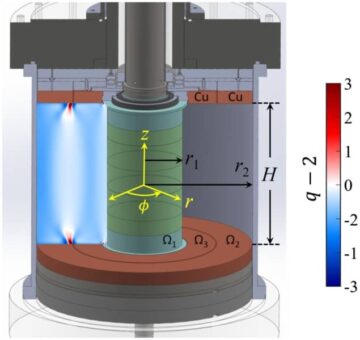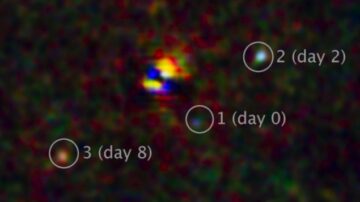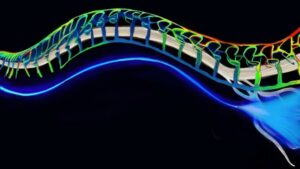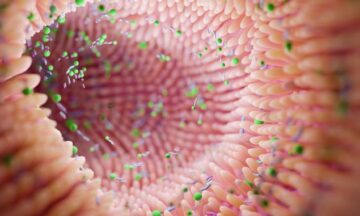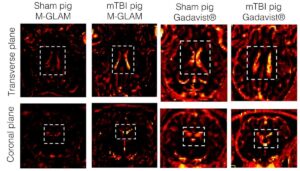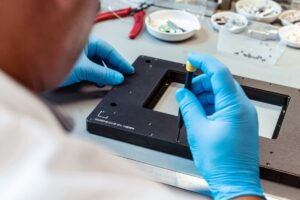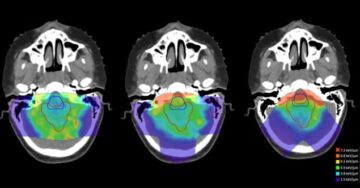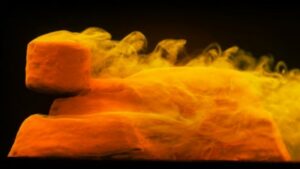
Scientists in New Zealand have combined two wavelengths of light to deactivate a bacterium that is invulnerable to some of the most widely used antibiotics in the world – paving the way for a potential disinfectant treatment to address the urgent problem of antimicrobial resistance.
Synergistic effect
The researchers, based at the government-owned Crown Research Institute AgResearch, combined two wavelengths – far-UVC (222 nm) and blue LED light (405 nm) – to deactivate an antibiotic-resistant bacterium, specifically extended-spectrum β-lactamase-producing (ESBL) Escherichia coli. They outline the results of their research in the Journal of Applied Microbiology.
As co-author and project leader Gale Brightwell explains, the unique aspect of the approach is the synergistic effect achieved by combining the two wavelengths. This results in superior efficiency compared with using these wavelengths individually, and utilizes distinct antimicrobial mechanisms that “work together to effectively deactivate bacteria”.
“We believe the blue light inflicts the initial damage to the bacterial cells, making them more vulnerable, and far-UVC then capitalizes on this weakened state to exert its antimicrobial effects more efficiently,” says Brightwell, principal scientist and science team leader for the AgResearch Food System Integrity Team.
Sustainable solution
According to co-author Amanda Gardner, a research associate at AgResearch, the new technology could be used to combat bacterial contamination in a number of environments – including healthcare facilities and food processing plants, as well as water treatment plants and public spaces like airports, schools and public transport. She notes, however, that further research is needed to “fully understand the health impacts, establish optimal dosages, and ensure the technology’s safe and effective use in clinical settings”.
“The study’s advance lies in demonstrating the effectiveness of the dual-light technology against antibiotic-resistant bacteria without promoting further resistance,” Gardner explains. “However, addressing the development of light tolerance in bacteria and verifying its performance under practical conditions are crucial steps to maximize the positive impact of this technology in clinical and real-world settings.”
Gardner highlights a range of advantages of the approach, particularly when compared with existing disinfection methods, including a lower risk of antibiotic resistance in the treated bacteria, and the ability to apply dual-light technology selectively to “target specific areas or surfaces for disinfection, without affecting other parts of the environment or human health”.
“Unlike chemical disinfection methods, the dual-light approach is chemical-free, reducing the environmental impact and health risks associated with chemical use. It offers a more sustainable and eco-friendly solution for bacterial deactivation,” she says.
Sha also points out that far-UVC and blue LED light technology can be used in continuous lighting conditions, allowing for constant disinfection without the need for intermittent treatments. “In addition, once fully developed and implemented, the dual-light technology may offer cost savings in terms of energy consumption and reduced reliance on expensive antibiotics for bacterial control,” she adds.
Next steps
The next steps for the research team are to investigate the mechanisms behind the development of light tolerance in bacteria and explore its effects on different antimicrobial-resistant strains. According to Brightwell, the team also aims to collaborate with light manufacturers and industry partners to verify the technology’s performance under practical conditions.

Laser pulses light the way towards killing antibiotic-resistant bacteria
“Determining the minimum effective killing light dose and assessing potential cross-resistance to other stressors will further optimize the technology’s application in combating bacterial infections without adverse outcomes,” she says.
“Overall, the dual-light technology holds great promise as a safer and more sustainable alternative to traditional chemical disinfection methods, contributing to the global efforts in combating antimicrobial resistance,” she adds.
- SEO Powered Content & PR Distribution. Get Amplified Today.
- PlatoData.Network Vertical Generative Ai. Empower Yourself. Access Here.
- PlatoAiStream. Web3 Intelligence. Knowledge Amplified. Access Here.
- PlatoESG. Automotive / EVs, Carbon, CleanTech, Energy, Environment, Solar, Waste Management. Access Here.
- PlatoHealth. Biotech and Clinical Trials Intelligence. Access Here.
- ChartPrime. Elevate your Trading Game with ChartPrime. Access Here.
- BlockOffsets. Modernizing Environmental Offset Ownership. Access Here.
- Source: https://physicsworld.com/a/dual-wavelength-technology-deactivates-antibiotic-resistant-bacterium/
- :is
- 90
- a
- ability
- According
- achieved
- addition
- address
- addressing
- Adds
- advance
- advantages
- adverse
- affecting
- against
- aims
- Airports
- Allowing
- also
- alternative
- an
- and
- Antibiotics
- Application
- applied
- Apply
- approach
- ARE
- areas
- AS
- aspect
- Assessing
- Associate
- associated
- At
- Bacteria
- based
- BE
- behind
- believe
- Blue
- both
- by
- CAN
- Cells
- chemical
- Clinical
- CO
- Co-Author
- collaborate
- combat
- combination
- combined
- combining
- compared
- conditions
- constant
- consumption
- continuous
- contributing
- control
- Cost
- cost savings
- could
- Crown
- crucial
- damage
- David
- demonstrating
- developed
- Development
- different
- distinct
- dose
- Eco-friendly
- effect
- Effective
- effectively
- effectiveness
- effects
- efficiency
- efficiently
- efforts
- energy
- Energy Consumption
- ensure
- Environment
- environmental
- environments
- establish
- existing
- expensive
- Explains
- explore
- facilities
- food
- For
- fully
- further
- Global
- great
- Have
- Health
- healthcare
- highlights
- holds
- However
- HTTPS
- human
- image
- Impact
- Impacts
- implemented
- in
- Including
- Individually
- industry
- industry partners
- Infections
- information
- initial
- Institute
- integrity
- investigate
- issue
- IT
- ITS
- jpg
- leader
- Led
- lies
- light
- Lighting
- like
- lower
- Making
- Manufacturers
- max-width
- Maximize
- May..
- mechanisms
- methods
- minimum
- more
- most
- Need
- needed
- New
- New Zealand
- next
- Notes
- number
- of
- offer
- Offers
- on
- once
- optimal
- Optimize
- or
- Other
- out
- outcomes
- outline
- particularly
- partners
- parts
- Paving
- performance
- Physics
- Physics World
- plants
- plato
- Plato Data Intelligence
- PlatoData
- points
- positive
- potential
- Practical
- Principal
- Problem
- processing
- project
- promise
- promoting
- public
- range
- real world
- Reduced
- reducing
- reliance
- research
- researchers
- Resistance
- Results
- Risk
- risks
- safe
- safer
- Savings
- says
- Schools
- Science
- Scientist
- settings
- she
- solution
- some
- spaces
- specific
- specifically
- State
- Steps
- Strains
- superior
- sustainable
- synergistic
- system
- team
- Technology
- terms
- that
- The
- the world
- their
- Them
- then
- These
- they
- this
- thumbnail
- to
- together
- tolerance
- towards
- traditional
- transport
- treated
- treatment
- treatments
- true
- two
- under
- understand
- unique
- urgent
- use
- used
- using
- utilizes
- verify
- verifying
- Vulnerable
- Water
- wavelengths
- Way..
- WELL
- when
- widely
- will
- with
- without
- world
- Zealand
- zephyrnet


